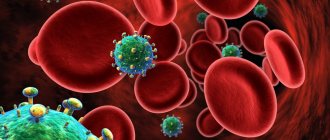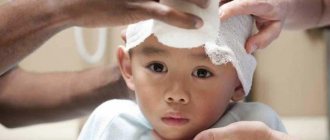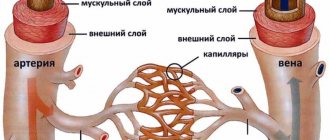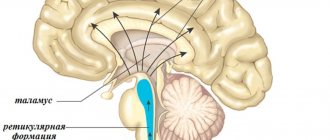Often people face such a problem that their elderly relatives have a stroke. This term refers to a violation of cerebral circulation, which leads to restrictions on the patient’s activities. When doctors make this diagnosis, the patient is forced to spend the first time in the hospital, and after discharge he needs special care at home.
To speed up the recovery of the body. There are two types of stroke: ischemic and hemorrhagic. In the first case, the patient’s recovery is much faster, but caring for the patient after a stroke falls entirely on the shoulders of his relatives. Such diseases carry serious complications for the patient’s body, so the process of care is a difficult task even for the closest people. The article provides basic recommendations for caring for such patients.
Basic rules of patient care
If a person has suffered a stroke, they will need quality care, especially if the person is paralyzed. At the same time, the most difficult thing in the process of caring for a patient is not so much the procedures themselves, but the need to preserve one’s own life. There are often cases when relatives of such patients cannot withstand the stress that has fallen on them and can fall into a long depression. This condition affects the well-being of everyone around, not just the patient.
Usually the attending physician gives a number of recommendations that allow you to organize proper care for the patient, even in a paralyzed state. Each case is individual and requires a specific approach. For some, helping with exercise, washing clothes, and preparing meals is enough. However, there are also severe cases when a person remains paralyzed; in such situations it is necessary to wash the patient, spoon-feed, give water and provide careful care. Everything can be complicated by the patient's recumbent regime when he is bedridden, but even in this case one must not give in to despair. You need to mentally prepare for the fact that the rehabilitation period for the patient will be difficult, and you must not forget about your own life. Experts identify several main tasks that need to be performed in the process of caring for a patient at home:
- Make sure that bedsores do not form;
- Protect the patient’s body from pneumonia;
- Help normalize digestion;
- Carry out preventive measures to prevent thrombosis;
- Prevention of relapse.
These tasks must be performed on a regular basis. Below in the article detailed descriptions of each direction will be given. At the same time, recommendations are given on how not to complicate your life and not fall into a state of depression, even if a person has to take care of a patient after a stroke. Such work requires strength and energy, which should be enough for one’s own life.
Palliative care
Do relatives whose family has a bedridden patient need help before death? What patient symptoms and signs indicate that she should be seen?
Palliative care for a patient is not aimed at prolonging or shortening his life. Its principles include the affirmation of the concept of death as a natural and natural process in the life cycle of any person. However, for patients with an incurable disease, especially in its progressive stage, when all treatment options have been exhausted, the question of medical and social assistance is raised.
First of all, you need to apply for it when the patient no longer has the opportunity to lead an active lifestyle or there are no conditions in the family to ensure this. In this case, attention is paid to alleviating the suffering of the patient. At this stage, not only the medical component is important, but also social adaptation, psychological balance, peace of mind of the patient and his family.
A dying patient needs not only attention, care and normal living conditions. Psychological relief is also important for him, the relief of experiences associated, on the one hand, with the inability to independently care, and on the other, with the awareness of the fact of his inevitably approaching imminent death. Trained palliative care nurses and physicians are skilled in the art of alleviating such suffering and can provide significant assistance to terminally ill people.
Prevention of bedsores
Paralyzed people most often face the problem of bedsores, since the bedridden lifestyle of patients after a stroke contributes to the emergence of this problem. Usually they can occur in areas where there is too much pressure on the body, for this reason metabolic processes can be disrupted, and tissues die and rotting occurs. The back, shoulder blades, tailbone and elbows are most susceptible to the formation of bedsores.
Current prices for anti-decubitus mattresses and medical products for the home follow the link.
More details
We recommend
Such injuries are a consequence of improper care of the patient after a stroke. Bedsores can appear if the patient is not turned over, and he lies most of the time in the same position. If the patient is paralyzed, then he cannot move on his own, which accelerates tissue necrosis; this situation can cause death. At the same time, bedsores are a serious source of infection that spreads throughout the human body. To prevent the appearance of such wounds in a patient, the following preventive measures must be taken:
- If a person is dealing with a paralyzed patient, then periodically it is necessary to independently change the position of his body; the patient will not be able to do this on his own;
- A mandatory examination of the patient’s skin condition is necessary;
- It is better to use a mattress made of special fabrics, which will protect the patient from the formation of bedsores;
- For prevention, pillows and rubber circles are also used;
- Doctors usually give recommendations for massage, which must also be followed;
- The body must be constantly treated with antiseptic hygiene products;
- It is recommended to check that there are no folds or unnecessary objects under the patient’s body.
If the process of caring for the patient is properly organized, and the body is constantly treated with an antiseptic, then dangerous infections will not appear on the body and the chances of a quick recovery will increase significantly. Lying down is not a reason to give up and give up; partial recovery is still possible. The main thing is to take timely measures for rehabilitation: with proper care for the patient after a stroke, the ability to walk and care for oneself can be restored.
Bedridden patient: how to recognize the signs of impending death?
Relatives of a dying patient at home should be aware of what they may encounter in the last days, hours, moments of his life. It is impossible to accurately predict the moment of death and how everything will happen. Not all of the symptoms and signs described above may be present before the death of a bedridden patient.
The stages of dying, like the processes of the birth of life, are individual. No matter how hard it is for relatives, you need to remember that it’s even harder for a dying person. Close people need to be patient and provide the dying person with the best possible conditions, moral support and attention and care. Death is an inevitable outcome of the life cycle, and this cannot be changed.
Prevention of pneumonia
In addition to the problem of bedsores, a patient after a stroke may face a number of other problems. If the blood in the lungs periodically stagnates, then the risk of pneumonia is high. This result may lead to disruption of the respiratory system. Usually, with proper care after a stroke, the risk of developing pneumonia can be prevented.
Preventive measures are the best option for the patient, since preventing the disease will be much more difficult. The therapy itself is more difficult, and in some cases even the strongest antibiotics will not help. When pneumonia occurs, there is a high risk of death for the patient.
The list of preventive measures to combat pneumonia includes the following:
- Periodically, it is necessary to conduct vibration massage sessions to treat the patient’s chest;
- Make sure that the patient takes medications prescribed by the doctor to remove mucus from the body;
- Carry out breathing exercises and gymnastics with the patient (you can simply inflate balloons, blow into a glass of water through a straw and other ordinary actions);
The steps themselves are quite simple, and they help prevent the development of pneumonia.
Giving help
A bedridden patient may experience significant suffering before death. Relief of symptoms of physiological pain can be achieved with drug therapy. Mental suffering and psychological discomfort of the patient, as a rule, become a problem for relatives and close family members of the dying person.
An experienced doctor, at the stage of assessing the general condition of the patient, can recognize the initial symptoms of irreversible pathological changes in cognitive processes. This is primarily: absent-mindedness, perception and understanding of reality, adequacy of thinking when making decisions. You can also notice disturbances in the affective function of consciousness: emotional and sensory perception, attitude to life, the relationship of the individual with society.
The choice of methods to relieve suffering, the process of assessing the chances and possible outcomes in the presence of the patient, in some cases can itself serve as a therapeutic tool. This approach gives the patient a chance to really realize that he is sympathized with, but is perceived as a capable person with the right to vote and choose possible ways to resolve the situation.
In some cases, a day or two before the expected death, it makes sense to stop taking certain medications: diuretics, antibiotics, vitamins, laxatives, hormonal and hypertensive drugs. They will only aggravate the suffering and cause inconvenience to the patient. Painkillers, anticonvulsants, antiemetics, and tranquilizers should be left.
Proper functioning of the digestive system
Usually, if a person is in a paralyzed position, relatives provide food and drink to the patient. In this case, food plays an important role, since the intestines and stomach must work well for a quick recovery of the patient. However, a stroke often leads to disruption of the digestive system; in order to restore its functioning, it is necessary to ensure that the body receives a large amount of fiber.
It can be purchased in stores and pharmacies in its pure form and during the process of caring for a patient after a stroke, add it to food and drinks. A prerequisite for caring for a patient after a stroke is to ensure a calm environment during the feeding process. Doctors recommend covering the patient with pillows so that the patient does not spend a lot of effort getting up. It is also better to include liquid foods or pureed foods in your diet. A blender will help in this difficult task.
Blood clots
Another possible consequence of a stroke is the formation of blood clots in the body. The reason for their appearance is stagnant blood in the body if you lead a sedentary lifestyle. They can also cause blockage of blood vessels in the patient. To avoid blood clots, you must:
- Ensure that the patient after a stroke follows the doctor’s recommendations for physical exercise;
- Massage the limbs where there is a high risk of stagnation;
- Use compression stockings;
- As prescribed by the doctor, give the patient medications to thin the blood.
Be sure to follow your doctor's recommendations on medication dosage. Choosing medications on your own can only harm the patient.
Relapse prevention measures
If the patient has experienced a stroke once, then there is a high probability that the attack may recur. That is why initial relapse prevention is carried out in the clinic, but it must be supported by measures at home:
- It is necessary to ensure that the patient performs physical exercises, as well as periodically massage the limbs;
- Eliminate stress for the patient and avoid heavy loads;
- Monitor the correct dosage of medications;
- Follow all doctor's recommendations;
- Periodically check the patient’s well-being and measure his blood pressure; if, when caring for a patient after a stroke, his condition worsens, it is recommended to consult a specialist.
- Make sure that the patient gives up bad habits.
The patient’s condition also plays a big role; he should not feel like a burden to his relatives. It is for this that it is necessary to find the line between caring for the patient and one’s own personal life; completely giving oneself to another person will not benefit anyone.
Recommendations for caring for patients after a stroke
Caring for a patient after a stroke is a difficult task, which primarily affects the psychological state of loved ones. That is why, in addition to recommendations for care, it is necessary to listen to advice on how to normalize your life so as not to fall into premature depression.
- Communicate with people in a similar situation. There are a large number of forums on the Internet for people who are in a similar situation. If you need to speak out, you can talk to those who have encountered similar problems, so you can find support and realize that this is not a punishment, but a problem that needs to be solved.
- Fatigue is a normal state. There is no need to convince yourself that fatigue is a bad state. Since the process of caring for a patient after a stroke is hard work, it is natural that loved ones get tired of it from time to time. Therefore, you should not forget about rest.
- It is necessary to take breaks periodically. You definitely need to give yourself a break for at least 30 minutes every 4 hours. There are situations when paralyzed patients need constant care, but you must leave 30 minutes of time for your own rest.
- You need to please yourself at least once a day. It is also necessary to find some time for hobbies or activities that bring true pleasure. A change in activity will prevent depression, which negatively affects not only the condition of the person himself, but also the patient.
- Allowed to give vent to negative emotions. Every person has the right to feel anger and resentment, but this does not mean that you need to start scandals with relatives. It’s better to go outside, cool down and try to think rationally about the problem. It must be remembered that a person can be capricious because of his illness, and not on purpose.
- Be sure to ask for help. One person cannot take upon himself all the care of a loved one; he simply cannot stand it. Therefore, you should not be embarrassed to ask for help and small favors.
- You can also turn to specialists for help. The rehabilitation process is not only about regular exercise and proper nutrition. In some cases, you may need the help of a specialist; for this, patients after a stroke may be referred to special rehabilitation centers. There, professional doctors and nurses will be able to provide them with the necessary assistance, and relatives will be relieved of part of the burden of caring for a patient after a stroke. Typically, such rehabilitation takes no more than two weeks: the patient will receive qualified assistance, and relatives will be able to take a short break from their troubles.
- Constant communication with the patient is necessary. An honest conversation is the best way to resolve any situation. Sometimes it is enough to talk to the patient for him to understand that he is not indifferent. Sometimes simple human communication is enough for the patient to feel much better; however, in such conversations it is recommended not to discuss the disease. You can talk about unrelated topics, tell an anecdote and raise the morale of the patient.
- You also need to take care of your own health. Sometimes a person is so immersed in caring for another that he forgets to eat and sleep normally, and also completely refuses to communicate with friends. This daily routine can have a negative impact on a person’s health, but he will not even notice the deterioration of his own health. That is why it is necessary to monitor your own diet, as well as take more vitamins.
The process of caring for patients after a stroke can be an overwhelming burden for one person. However, this responsibility cannot be completely abandoned. Relatives are responsible for the recovery of the patient, as well as how long he can live after such a serious attack. It may not always be possible to return the patient to normal daily life, but with proper care, significant improvements in health can be achieved. But we shouldn’t forget about ourselves: the psychological state of the person caring for the patient can influence the recovery process and their own well-being.
Hygiene procedures for a bedridden elderly person
1. Premises . The requirements for a room for a bedridden patient include isolation, good noise insulation, good air exchange and the presence of daylight. Fresh air, favorable temperature and sufficient daylight in the room where a bedridden elderly person is located are favorable factors promoting recovery. At the same time, situations may occur when the lighting intensity must be reduced (ophthalmological and nervous diseases). In such cases, the lamps are covered with frosted lampshades, or night lighting lamps with low power are used.
2. Temperature . For a normal microclimate in the room where a bedridden patient is located, a temperature range of 18°C to 20°C with humidity ranging from 30 to 60 percent is required. If the air in the room is excessively dry, you can place a damp cloth on the heating radiators to increase humidity levels, or place a container of water in close proximity. Simply ventilation helps reduce humidity.
- Recommended articles to read:
- Social services for older people
- Diseases of old age
- Valuable tips on how to choose a boarding house
It should be noted that in the city the daytime air is too saturated with harmful substances and dust, so ventilation should be done at night. If the environmental situation is normal, then in the summer months ventilation should be around the clock, and in winter at least three times a day. In order to prevent pneumonia from developing in bedridden elderly people during ventilation, it is necessary to protect the patient from cold air by covering the body with a blanket and the head with a scarf (the face should remain open). Under no circumstances should ventilation be replaced by spraying aromatic products.
3. Cleanliness is the key to health. In the room of a sick person, it is necessary to constantly take measures to maintain cleanliness. Comprehensive cleaning is required at least 2 times a week. This requires wet cleaning, in which the floor is washed either with a mop or a brush wrapped in a wet rag. It is better to shake things out that may collect dust outside or clean them with a vacuum cleaner.
seriously ill patients are carried out in compliance with all the rules of caution on a wheelchair, stretcher and other special devices. When carrying a patient on a stretcher, porters must move in short steps in the same rhythm (foot to foot). You should not try to shift the patient alone.
This is a task for two to three people (depending on the patient’s weight). In situations where it is not possible to seek help, one person can move a bedridden patient a short distance in the following way: one hand is placed under the back of the bedridden person in the area of the shoulder blades, and the other under the hips. In this case, the patient must hold on to the neck of the person carrying him. To transfer a patient to a bed from a stretcher, they are brought to the bed at a right angle, with the person’s feet to the part of the bed where the pillow is located. After this, with a slight turn, the patient is transferred to the prepared bed.
5. Bed . A bedridden elderly person needs the following items
- backing oilcloth;
- rubber circle;
- urine receptacle;
- vessel.
The patient's bed should consist of elements of the correct length. Multi-section products that are covered with a sheet are best suited as a mattress for ordinary beds. An oilcloth can be placed under the sheet to protect the mattress. For patients with spinal injuries, the bed can be placed on a hard board. The best place to place a patient's bed is a bed that is located away from heating equipment , which can be easily accessed from both sides .
When changing linen, you should try to avoid uncomfortable postures for a bedridden patient, which can cause pain or muscle tension. The most convenient way looks like this:
- the patient is moved to the edge of the bed;
- the old sheet is rolled up to the level of the lying body;
- a new sheet is placed in the vacated space with a reserve;
- the patient is shifted onto a clean sheet.
If it is impossible to move the patient, the sheet rolls down from the legs to the lower back, and then to the head. The corners of the sheet should be pinned to the mattress. Each change of bed should be accompanied by shaking the blanket.
6. Change of underwear . The most convenient option for underwear for a bedridden patient is undershirts. In order to remove it, you need to place your hand under the patient’s back and lift the shirt to the neck. After this, remove the sleeves (if one arm is damaged, first remove the clothes from the healthy one), and then the entire shirt. Dressing occurs in reverse order.











